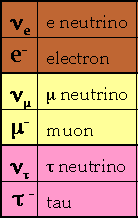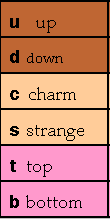
CERN is Europe's centre for research into particle physics. The key element of CERN's research over the years has been to accelerate particles to huge energies and then collide them - the collisions serve two purposes: firstly we can examine what matter is made of. Secondly we can use the energy of the collisions to create particles which do not normally exist on Earth but which will exist in more energetic regions of the universe and which would have existed in the ``big bang''. The Department of Physics at SMU has strong links with CERN through our faculty and students' work on the ATLAS detector at the Large Hadron Collider (LHC). At CERN there is a huge underground circular tunnel (27 kilometers long and about 100 metres underground just outside Geneva, Switzerland) through which particles are accelerated and stored preparitory to collisions. Recently, this tunnel was converted for use from the previous experiment, the Large Electron Positron Collider (LEP), to the next major experiment LHC. At LEP, electrons and positrons were accelerated around the ring in opposite directions before colliding in one of the interaction areas. In LHC counter-rotating beams of protons are being used instead. The experiment LEP was built to study in detail especially the particle carriers of the Weak nuclear force, W and Z. It was also hoped to discover new particles, but it turned out that LEP did not have enough energy to do this, hence the upgrade to the LHC. The purpose of these web pages is to allow you to identify particle collision events seen at LEP; you will be doing this using exactly the same methods that research physicists would use.
A simple example of the kind of collisions studied at LEP is shown schematically in the following picture:

This picture shows an electron (e-) and a positron (e+). A positron is the antimatter equivalent (or antiparticle) of an electron. The electron and postron fly towards one another at high energy. They collide to produce a Z0 particle. Because the initial e- and e+ have momenta which are opposite in direction and equal in magnitude, the Z0 has no net momentum and is, therefore, stationary. After a very short time (about 10-25 seconds) the Z0 decays to produce a muon (µ-) and an antimuon (µ+). The muon and antimuon then fly apart "back to back" with one another.
We surround the place where the Z0 is produced with detectors, which enable us to see the particles produced when it decays.
The different sorts of elementary particles of matter can be grouped into two kinds. The first kind we call the "leptons":

In addition to the electron and muon, that we have met already, a third member
of this group also carries an electric charge; this particle is
called the "tau".
Each of these three particles has a partner called a "neutrino".
Neutrinos carry no electric charge and can travel large distances through
matter without interacting.
They leave no tracks in our detector although sometimes we can deduce that a
neutrino was produced.
(You'll see how later on!)

The "up" and the "down" quark can be found inside protons and neutrons
(which themselves can be found inside atomic nuclei).
The heavier quarks can be made at particle accelerators or by the interactions
of cosmic rays in the upper atmosphere, but don't occur naturally on earth.
Finally, in addition to the matter particles there are the force carrier particles. Above we met the W and Z that transmit the Weak force. There are also the photons, that carry the electromagnetic force, and gluons that carry the Strong nuclear force (also called the colour force). It is not possible to see any of these force carrier particles directly in the detector, but their presence can be deduced by detecting the matter particles into which they decay.
In the following sections, first we explain a little bit about the detectors we use to see the diferent kinds of particles as they travel through our experiment. Then, in several stages, we explain how to identify the different kinds of particle interactions or "events" that can occur (with some helpful examples to get you started).
 Click here to proceed to the next part
of the program, which is
"The Detector and How to Understand the Event
Pictures".
Click here to proceed to the next part
of the program, which is
"The Detector and How to Understand the Event
Pictures".
 Back to Home Page with table of contents.
Back to Home Page with table of contents.